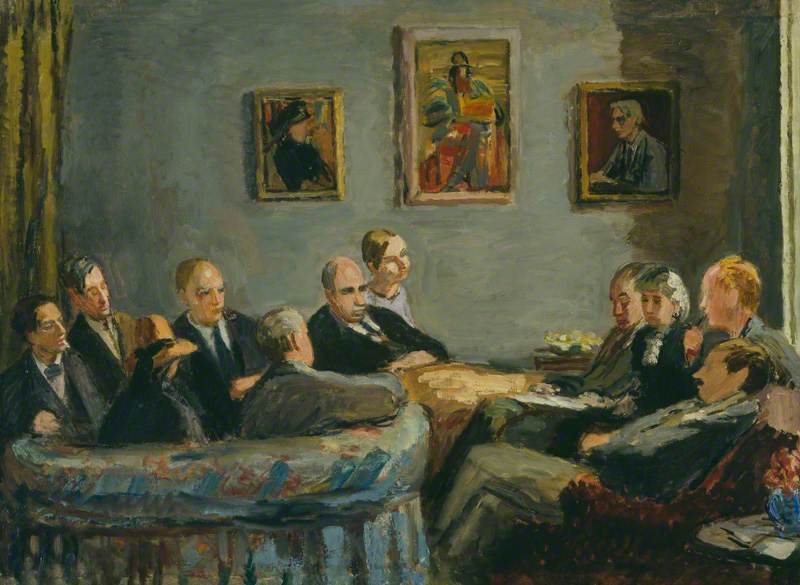The Cooper Gallery opened its doors on 31st July 1914, through the philanthropy of local wealthy industrialist Samuel Joshua Cooper. He bought the building in 1912, with the intention of establishing a gallery for the people of the town. Unfortunately he died in 1913, but in his will he left over 250 paintings to the town and the building in which to house the collection. In 1934, a new extension to the gallery was built in memory of local art collectors James and Jane Fox, who left another 45 paintings to the collection.
Since then there have been other bequests, but perhaps the most important is the twentieth-century collection bequeathed by Sir Michael Sadler during the 1930s. This bequest was made whilst Sadler was Master of University College, Oxford. It is known as the ‘In Historical Series’ and his Notes on a Collection of English Drawings (1937) explain the rationale behind his collecting and reasons for gifting these works to the Cooper Gallery. ‘This small collection of drawings by English artists will, it is hoped, give pleasure to a few in each succeeding generation of Barnsley people, helping some who care for drawing to see what painters gave us eyes to see’.
The Cooper Gallery received a grant from the Paul Mellon Foundation for the Discovering British Art project, which researched a selection from the Cooper Gallery’s permanent fine art collection, improving the information about the provenance, artists and subject matter. The project culminated in an exhibition about the British artist Edward Wadsworth that ran from 14th September to 24th December 2013.
As part of the Discovering British Art project, research revealed new and significant information about works in the collection, the importance of which had not previously been realised. Research on a number of other pieces in the collection, included works by Gilbert Spencer, Prunella Clough, Henry Moore, Duncan Grant, Vanessa Bell, Paul Nash, John Currie and Christopher Nevinson amongst others. Interestingly, the drawing in the collection by John Currie of St Georges Square, London, 1912, was discovered to be rare and quite significant.
John Currie studied at the Royal College of Art and briefly at The Slade in 1910. He left his wife to live at 1 St Georges Square with Dolly Henry in 1912. This relationship ended in tragedy two years later when he killed her and shot himself. It is likely that Sir Michael Sadler bought this work in 1913 when he was introduced to Currie by his son Michael. There are only three known works by the artist in this period, which makes this drawing especially important.
Gilbert Spencer’s Boy’s Head was also donated by Sir Michael Sadler through the National Art Collections Fund in 1932. It is signed but not dated. Gilbert Spencer was born and grew up in Cookham, Berkshire, a small town on the River Thames west of London. He was the younger brother of Stanley Spencer. Gilbert made a number of portraits throughout his career, often as studies for paintings that were not always realised. There is no clue to the identity of the sitter or the date it was completed, however the drawing does bear a resemblance to Spencer himself. If it is a self-portrait, the likely production date is 1913–15 whilst Spencer was studying at The Slade. Correspondence with the Spencer estate regarding this theory is still ongoing.
It is hoped that further research on The Cooper Gallery’s twentieth-century collection will continue in light of the exciting discoveries so far. For more information on The Cooper Gallery visit www.cooper-gallery.com.
Jemma Conway, Audience Development Officer, Barnsley Arts, Museums and Archives






